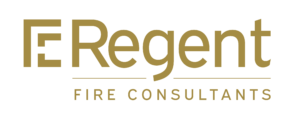Fire Safety Engineering
Fire Safety Engineering can be defined as the application of scientific and engineering principles based on the understanding of the effects of fire, the reaction and behaviour of people to fire and how to protect people, property and the environment.
Fire Safety Engineers
Fire Safety Engineers are people who are suitably qualified and experienced in fire safety engineering. They have a wide range of skills including the fundamental knowledge and experience of fire phenomena and its effects, as well as an understanding of how people, building structure and fire safety systems react to fire. Our Fire Safety Engineers are highly experienced and have an in-depth knowledge of fire safety design codes, national and international fire safety standards and fundamental fire engineering principles.
Chartered Engineers (practicing as fire engineers) are highly experienced people that are registered with the Engineering Council or Engineers Ireland (as Chartered Engineers) and have demonstrated through assessment process (usually through the Institution of Fire Engineers or Engineers Ireland) that they have the required level of education, experience and ability to practice as a Chartered Engineer. Our Chartered Engineers not only carry out their own work, but support our fire safety consultants and engineers, providing the customer with assurance that they are engaging with an organisation which has competence in depth.
Our engineers apply their knowledge and understanding to a wide range of innovative building designs within the built environment and provide the most economical solution. When designing your building, our engineers will take into account the ‘total fire risk management package’ specific to the building. Their expertise is in key areas such as fire science (fire dynamics), means of warning and escape, evacuation modelling, smoke control, fire suppression, structural fire resistance and fire and rescue intervention.
Solutions and Strategies
Whether your requirements are for an individual fire safety engineered solution to a safety issue or your building design needs to be supported by a full fire engineered strategy, our engineers will work closely with all stakeholders (including regulators) to develop the most appropriate and cost-effective strategy whilst achieving overall project goals. Utilising the most advanced technology, expert fire engineering judgement and innovative thinking, here are some examples of the buildings and situations which we can provide solutions and strategies for:
- Shopping centres and arcades
- Hospitals
- High rise commercial and residential developments
- Extended corridors within residential buildings
- Hotels
- Large warehouse buildings
- Car parks
- Building boundary issues & external fire spread analysis
- Fire suppression and smoke control design
- External walls of buildings
- Atria
- Theatres and educational buildings
- Train stations
- Timber construction projects
- Structural fire engineering
- Fire protection systems
- Heritage structures
External Wall Fire Safety Review
We work closely with landlords, investors, developers, estate management, surveyors, and local authorities to provide reliable and robust external wall reviews of buildings whether they fall into the definition of a ‘relevant building’ / ‘building in scope’ or not. Our Fire Safety Engineers (all of whom meet the professional body membership, registration and competence criteria requirements) will undertake fire safety assessments of the external wall construction to identify risks with the materials and systems which make up the external envelope of buildings. We can provide relevant advice, guidance, support and solutions where needed including:
- Desktop review of external wall systems
- Intrusive inspection and building surveyor support
- Reports identifying findings and proposed remedial action
- Assistance with completion of EWS1 form
- Chartered engineer form EWS1 sign off
- Consultation with the fire and rescue service and other regulatory authorities throughout the process
- Interim measures including liaison with regulatory authorities on safety requirements for external wall risk
Fire, Smoke & Evacuation Modelling Analysis
More and more designs are seeking to push the boundaries in terms of what is possible with architectural design, financial savings and the operational use of buildings. Some of the design projects which benefit from the use of modelling are: shopping and hospital malls, residential flats buildings, atria, theatres, enclosed car parks, train stations and warehouse buildings.
Our engineers utilise various advanced fire, smoke and human evacuation modelling techniques to support fire safety design and fire investigation. Using modelling tools such as Computational Fluid Dynamics (CFD) software and evacuation modelling programmes, we can evaluate building design to understand the engineering challenges of the project, thereby providing the most optimum and cost effective solution.
There are many advantages of modelling such as to: provide a more accurate assessment of the severity of fire and the likely impact to life and structure, estimate how fire protection and engineering systems are influenced, improve the effectiveness of evacuation procedures and the safety of building occupants, inform fire barrier and structural fire engineering assessments, support post fire incident investigation and resolve litigation issues.
